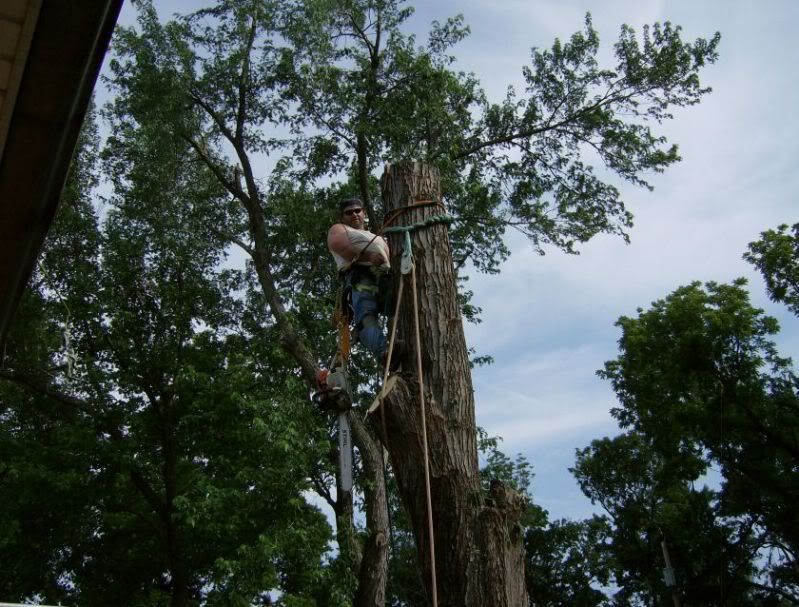treemandan
Tree Freak
I wasn't even paying attention, book em Blake-o. But if you are up there on thin dia conifer and feel a well placed stub will help to steady a spiked foot that is a good idea.
Last edited:

I wasn't even paying attention, book em Blake-o. But if you are up there on thin dia conifer and feel a well placed stub will help to steady a spiked foot that is a good idea.
That's how I know your a tree man, dan. lol Of course a nub or two in your work area is handy when blowing out a top, especially if you might take the aforementioned ride. But below you...well you saw what happened on that tulip because I didn't want to bring up a big saw to flush it off.
Feel up to spiking around on 6 inch dia tulip poplar? Not me.
Personally, I don't want to use rock climbers for groundies in my rigging operations. I want to use experienced tree hands that I have preferably trained myself. Because they know the art of how to let the ropes run and braking that is only learned by hands on tree rigging experience.
.
I guess my question Tree MD is how to avoid such a violent shaking up top, when the top starts to go down, know what i mean?? Probably shorter pieces up top so there isn't so much weight pushing on the top of the spar?
Feel up to spiking around on 6 inch dia tulip poplar? Not me.
Strip the branches from the side of the tree you are sending the wood down. Leave a lot of branches on the "unused" side of the tree, but not so many that it will be a problem lowering them later.
Don't worry about shaking the tree. The remaining branches that you left on the tree will act as a shock absorber, damping all the motion. The higher they are, especially if they are 90° from your falling top, the better they will slow down the ride.

You sure put a lot of turns in your timber hitch!
I don't even begin to put turns in mine until I am well around the backside of the tree. It might just be my impatience to get it tied, but I haven't dropped one yet.
Tall thin tops can really give you one hell of a ride as PDQL says. Especially on evergreens. I have taken many a hell ride... I lovem.
I about bit off more than I could chew on this one. My first spar cut was a 10 or 12 footer. It nearly shook me loose. I dug my spurs in and rode that sucker like a fat girl on prom night... The HO was watching and said it was a good thing that I kept myself tied into the tree while I cut. He went inside after that one. Said he's seen enough.

Enter your email address to join: